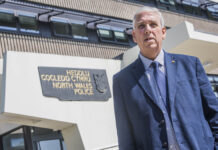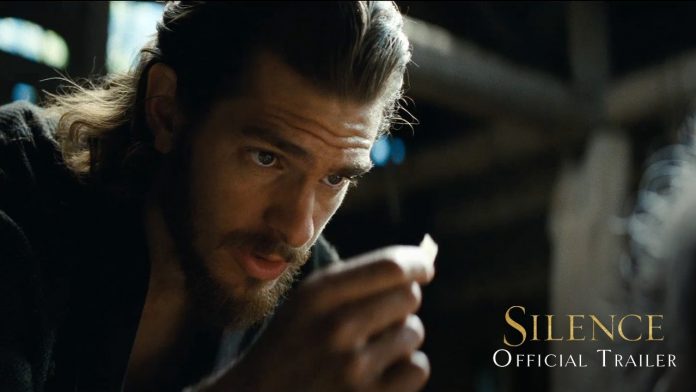DECADES in the making and after much uncertainty, Martin Scorsese at long last brings to the screen Silence, an often disturbing drama that may not be beloved as other works but presents as a solid piece nevertheless.
In the middle of the 17th-century, two Portuguese Jesuit priests Father Rodrigues (Andrew Garfield) and Father Garupe (Adam Driver) receive word that their mentor Father Ferriera (Liam Neeson) has abandoned his faith following barbaric treatment of Japanese Christians by their Shoguante counterparts, including himself.
Aware of the grave dangers they face, both men are adamant that they must travel to the land of the Rising Sun to find Ferriera.
Accompanied by an interpreter (Yosuke Kubozuka) who previously denounced his faith at the hands of his captors, the two discover to their horrors just how brutal the treatment of Christians. Often, horrific scenes of murder are depicted to those who refuse to denounce their religion, made official by stamping on an image of Christ.
As the risk of their presence increases, the priests gradually find themselves having to decide which is the more valuable between their beliefs and the lives of others.
Coming off the back of The Wolf of Wall Street, Scorsese could not have made a more different film of which the chilling nature he crafts kicks in from the very start. Reminding us of his reputation for displaying gruesome but unglorified violence, once the title card goes, we see what appears to be a standard landscape shot, only to then notice the shot in the background of decapitated heads.
We then observe Neeson’s character forced to watch as the bound people he shares a religion are tortured by having boiling water showered on to them, the visuals accompanied with a voiceover describing the tactics of the assailants to guarantee maximum pain.
It transpires that the voiceover is a reading of the letter Ferriera has sent his protégés explaining the circumstances, setting off the journey that will have consequences for both of them.
If the opening shot is where it peaks, we are just getting started as we enter a world which provokes thought as to whether maintain religion is worth the horrors that we see.
Men and women are seen being burnt alive, drowned and decapitated, along with a prolonged sequence in which several men are crucified at sea, their near-naked bodies battered by the freezing waves, one taking four days to perish, as the hiding priests helplessly watch.
Nobody will be blamed for wanting to look away at these scenes but here is where Silence wins its stripes, showing a land of such tranquil appearance being the location for such barbarity and provoking much thought.
Is what is being asked a price worth paying to avoid such a grim fate? People will have different opinions but Scorsese presents a world where the victims cannot win.
Recruiting Garfield in the lead role is Scorsese’s way of showing that not all his films have to involve DiCaprio or De Niro, and though it is unlikely we will see a collaboration as prolific between the two, it is an enjoyable collaboration to see.
Garfield is superb at times, even with a revolving accent, conveying the emotional charge with grace and displaying an effective look of a man who goes in with duty and appearing near-broken as the film progresses.
Neeson however plays with a vulnerability he crafts so convincingly, it proves that he is just as wanted in drama as he is in the action roles of recent years.
Forced to observe the carnage around him during the epilogue, you can feel the intensity of the scene when he drops in despair to his knees, knowing there is likely worse to follow.
In terms of direction, it is one strong enough to warrant Scorsese for yet another Director Oscar nomination, given his attention to detail and accuracy for brutality. Though it is not the film that one can speak of as fondly in the vein of Taxi Driver or Raging Bull (what nowadays can), it has certainly his strongest direction since The Departed.
If his best days are behind him, this is still evidence of Scorsese’s reputation within the industry, given he is probably one of a handful of directors who could get a piece of this importance made. Despite a more than slow pace on a handful of occasions, it is redeemed by a fascination with wondering where the characters are heading, helped by the feeling of unease that lingers throughout.
Demonstrating his talent for directing yet again, a scene sticks in the mind with its simplistic nature quietly frightening. As the two priests break away from their hiding spot on a baking day to sit outside, they are spotted by unknown figures where they are forced to stay static. As nearby smoke obscures the small gap from which the figures can see, the priests quickly make a run back to their hideout.
Scenes like this give motive for why Scorsese really deserves his reputation as the leading director in the world today; it’s not just the big scenes, it’s the small scenes in between that stay in the mind too, with the direction the reason for said success.
With the same kind of redemption themes that previous films have explored, it is no big surprise to see Silence helmed by its director. In fact, it’s down to him, along with the performances of its actors, that it succeeds, not as high as one would have hoped, but enough to appreciate it.




























